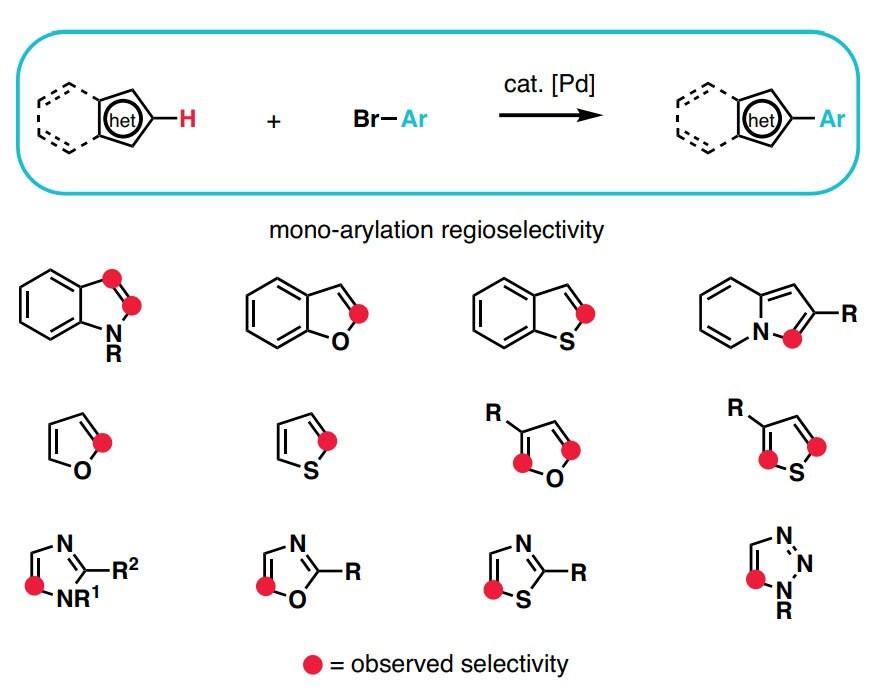C–H Functionalization
C–H 결합 활성은 유기 합성 화학의 성배라 불립니다.1 유기 화학, 유기 금속, 촉매 작용에 걸친 최근의 노력은 C-H 결합의 반응성을 이해하고 이 통찰을 이용하여 강력한 반응을 개발하는 데 상당한 영향을 미쳤으며, 이는 역합성에 이러한 기법을 광범위하게 도입할 시기가 무르익었음을 시사합니다.2-11 선택적이고 제어력 있는 방식을 사용해 C–H를 C–C, C–N, C–O 또는 C–X 결합으로 안정적이고 예측 가능하게 변환하므로 단계 경제 및 폐기물 감소 면에서 유리합니다.
주요 카테고리
유기 합성에 사용되는 가장 크고 다양한 분자 단편족 중 하나인 헤테로고리 구성 단위의 포괄적인 포트폴리오를 제공하게 되어 자랑스럽게 생각합니다.
귀하의 툴킷을 위한 트리플루오로메틸, 디플루오로메틸, 트리플레이트 및 펜타플루오로설파닐 치환체와 같은 다양한 플루오르화 구성 단위 제품을 사용하여, 목표 화합물을 훨씬 더 간편하게 발견할 수 있습니다.
C-H 활성화의 새로운 방법은 주어진 분자에서 표적이 될 수 있는 부위의 수를 확장하여 이를 더 복잡한 제품으로 정교하게 만드는 기회가 증가하였습니다. 또한 이것은 유기 합성의 표적이 되는 완전히 다른 화학결합, 특히 높은 화학 선택성을 허용합니다. C–H 결합 활성은 일반적인 기능군 화학물질과 결합하여 복잡한 천연 제품과 제약 화합물을 위한 화학 합성을 상당히 합리화하였습니다. C-H 결합 활성 적용은 분명히 장점을 갖지만, 유기화학에 대한12 많은 커리큘럼은 이 접근방식을 반영하도록 아직 업데이트되지 않았으며 추가 정보는 C-H 결합 활성 매뉴얼에서 확인할 수 있습니다.
관련 자료
- Professor Karl Anker Jørgensen and his group have developed ethers which serve as excellent chiral organocatalysts in the direct asymmetric α-functionalization of aldehydes.
- Rapidly diversify (hetero)aromatic scaffolds for chemical industry needs amid resource and time constraints, ensuring efficiency.
- Stanford's Du Bois group advances Rh-catalyzed C–H amination, producing heteroatom motifs in ring heterocycles.
- Aryl chlorides are commonly used in cross-coupling reactions and can serve as key intermediates towards the synthesis of pharmaceutical drug candidates and natural products.
- A recyclable, ligand-free ruthenium catalyst for C–H activation reactions and concomitant C–C bond formation in the presence of water.
- 모두 보기 (11)
관련 프로토콜
- Tips and troubleshooting for FFPE and frozen tissue immunohistochemistry (IHC) protocols using both brightfield analysis of chromogenic detection and fluorescent microscopy.
- 모두 보기 (0)
저희가 도와드리겠습니다
문의 사항이 있으시면 고객 지원 요청서를 제출하시거나
또는 당사 고객 서비스 팀에 말씀해 주십시오.
이메일 custserv@sial.com
또는 전화 +1 (800) 244-1173
추가 지원
- Chromatogram Search
Use the Chromatogram Search to identify unknown compounds in your sample.
- 계산기 및 앱
웹 툴박스 - 분석 화학, 생명과학, 화학 합성 및 재료 과학을 위한 과학 연구 도구 및 리소스.
- Customer Support Request
씨그마 알드리치의 주문, 제품, 계정 및 웹사이트에 대해 궁금하신 부분을 확인할 수 있습니다
- FAQ
Explore our Frequently Asked Questions for answers to commonly asked questions about our products and services.
참고문헌
계속 읽으시려면 로그인하거나 계정을 생성하세요.
계정이 없으십니까?







